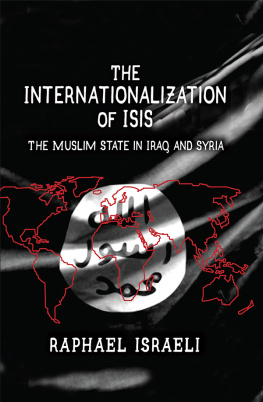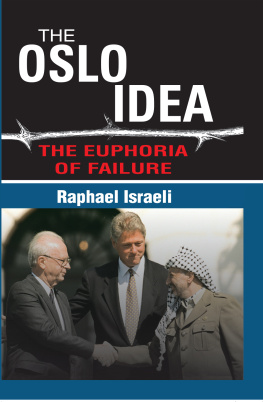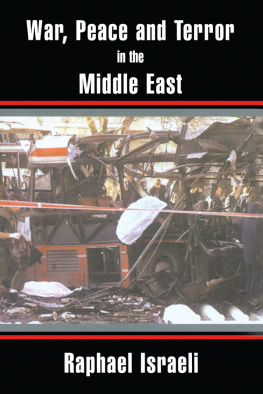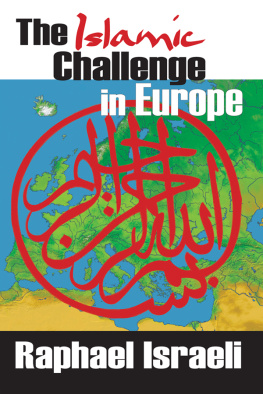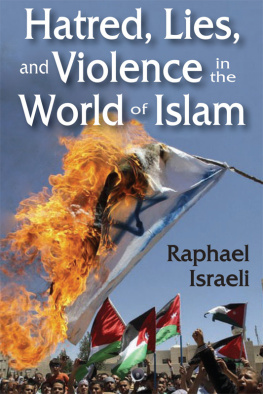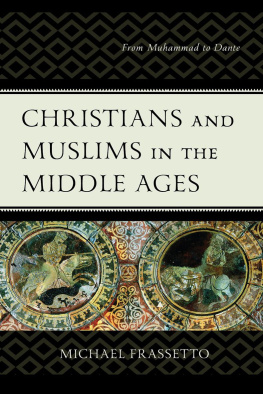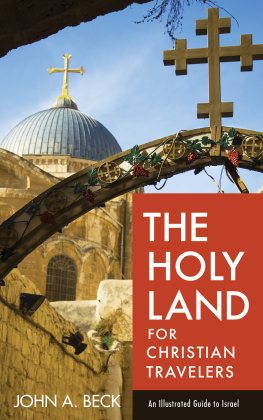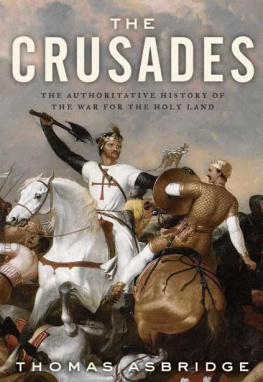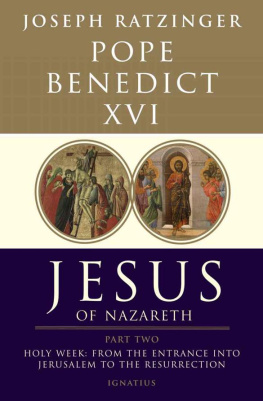First published in 2002 by Frank Cass Publishers
Published 2014 by Routledge
2 Park Square, Milton Park, Abingdon, Oxon OX14 4RN
711 Third Avenue, New York, NY 10017 USA
Routledge is an imprint of the Taylor & Francis Group, an informabusiness
Copyright 2002 R. Israeli
British Library Cataloguing in Publication Data
Israeli, Raphael
Green crescent over Nazareth: the displacement of Christians by Muslims in the Holy Land. - (Israeli history, politics and society)
1. Christianity and other religions - Islam 2. Islam - Relations - Christianity 3. Islam and state - Israel - Nazareth 4. Church and state - Israel - Nazareth 5. Nazareth (Israel) - Religion
I. Title
261.27
ISBN 978-0-714-65258-0 (cloth)
ISBN 978-0-714-68236-5 (paper)
ISSN 1368-4795
Library of Congress Cataloging-in-Publication Data
Israeli, Raphael.
Green crescent over Nazareth: the displacement of Christians by Muslims in the Holy Land / Raphael Israeli.
p. cm.
Includes bibliographical references and index.
ISBN 0-7146-5258-X - ISBN 0-7146-8236-5 (pbk.)
1. Palestinian Arabs-Israel-Nazareth-History-20th century. 2. Nazareth
(Israel)-Ethnic relations. 3. Nazareth (Israel)-Politics and government-20th century 4. Nazareth (Israel)-Social conditions-20th century 5. Islam- Relations-Christianity. 6. Christianity and other religions-Islam. I. Title.
DS113.7.187 2002
305.6'095694'5-dc21
2002019200
All rights reserved. No part of this publication may be reproduced, stored in or introduced into a retrieval system or transmitted in any form or by any means, electronic, mechanical, photocopying, recording or otherwise, without the prior written permission of the publisher of this book.
Typeset in Palatino 10.5 on 13 points by Cambridge Photosetting Services
ISBN 978-1-315-04012-7 (eISBN)
This book is about a controversy that has been gripping the Arab community in Israel over the past few years, pitting its growingly combative Muslim majority against the smaller, doubly marginalized Christian minority, which is struggling for survival. While this struggle has been brewing beneath the surface for many years, it has now come to the fore as an open, and often violent conflict, in the context of the Shihab-a Din Affair in Nazareth.
In the first decades of Israels existence, Arab politics were dominated by either tribal notables, who were themselves protgs of the establishment parties such as Mapai, the antecedent of todays Labor (which ruled the country until 1977), or the Christian founders and leaders of the Communist Party who championed the Arab nationalist cause, it being understood that as Marxists they did not have to embrace the Islamic elements of most Arab nationalist movements. However, the Christian founders were gradually pushed to the sidelines by the much faster growing Muslim community that constituted the rank and file of the Party, and young Muslim members climbed the ladder of the leadership and displaced them. Personal jealousies compounded by a fierce sense of frustration over the loss of their positions drove the Christians into a position of double alienation: both from their country as an Arab minority and from their fellow (Muslim) Arabs as a Christian, and now displaced, minority among them.
There is no doubt that two powerful parallel processes have precipitated the rift between these two communities and brought it into the open: on the one hand the rise of the Islamic Movement in Israel since the late 1980s, and at about the same time the collapse of communism throughout the world. These two processes were linked, inasmuch as there developed a zerosum rapport of force between them: the rise of Islam drove away many former communists into the arms of the Islamic parties; and the waning of communism, which had been the bastion of Arab nationalism, encouraged many Muslims into the open arms of the fundamentalists, who came up with a new program to incorporate these lost souls and provide them with new ideological and political anchors.
When Muslim fundamentalists in the city of Nazareth which had been Christian but is now 70 percent Muslim invaded the plaza in front of the Basilica of the Annunciation on Christmas Eve in 1997, they signaled that they wanted the majority position of the Muslims to be brought to bear on how local affairs were conducted. Their demands were clear: since they claimed that the plaza was Waqf (Holy Endowment) land, they had to enforce a total cessation to the work of paving the plaza, initiated by the Municipality and the Government in order to accommodate the Pope and the millions of pilgrims expected for the Millennium ceremonies, and instead build a mosque on the premises. The grandiose plans advanced by the squatters, to erect a minaret 87 meters high, which would have both dwarfed the Basilica and obstructed the view to it, showed that the plans had been conceived well in advance and revealed that the Islamists thought the opportunity had now come to put them into action.
Previously, a school had occupied that plot of land, which belonged to the Israeli Government, who allowed the Municipality to destroy it in order to make way for the plaza and the Millennium festivities. As long as the school was in operation, Muslims had never opposed the Millennium plans, but once the plaza was cleared and the work started, the Muslims decided to strike. They feared that if their nowMuslim city were allowed to become the focus of Christian celebrations, which would fix it in world public opinion as a Christian city, their quest to diminish that image might be irreversibly harmed. They said very clearly to this author (who had been appointed a member of the Commission of Inquiry to provide solutions to the rift) that they would rather suffer the economic backlashes of the rift, which would deprive them of tourism and pilgrims, than witness the ongoing encroachment on their cities by world Christianity.
The Israeli Government adopted the process of law and petitioned the courts to order both the evacuation of the squatters from a land that was not evidently theirs, and the demolition of the vast tentmosque that had been erected illegally on that ground. However, the very fact that the Government was prepared to negotiate with the invaders turned the issue from a simple criminal case of squatting and violation of urban planning laws, into a contentious affair and a cause clbre that attracted the attention of the media and of public opinion throughout the world. In the meantime, two election campaigns took place that helped immobilize the situation: in 1988, the local elections were fought against the background of mounting tension between Muslims and Christians in Nazareth, where the ShihabaDin Mosque Project became the key issue and helped the Islamists to gain the majority in the City Council. Then there were the national elections in 1999, in which Ehud Barak from the Labor Party battled to depose the incumbent Prime Minister Netanyahu of the Likkud, and was very dependent on the ArabMuslim vote to achieve his goal.
Indeed, immediately after Baraks election, with the massive support of the Arabs, he set up a ministerial committee that gave its stamp of approval to the building of the mosque, albeit on a reduced scale. But the courts then delivered their judgment in October 1999, which lashed out at the Islamists claims of ownership as being foundless; but, since the land belonged to the Government, it could formally yield it to whomever it wished. However, the point was not lost on anyone that, by yielding to the illegal squatters, the Government had accepted the rules laid down by the Islamists, who invaded property and used force and threats but were rewarded in the final analysis something indisputably inimical to the rule of law. Also, by giving up its rights to that plot of land, the Government had unnecessarily aroused the wrath not only of the local Christian denominations, but the whole Christian world, against Israel.


